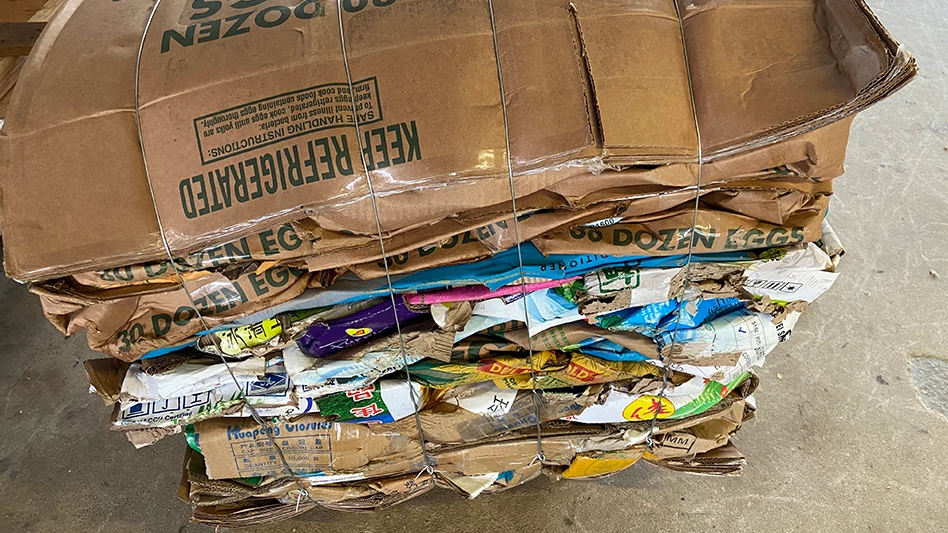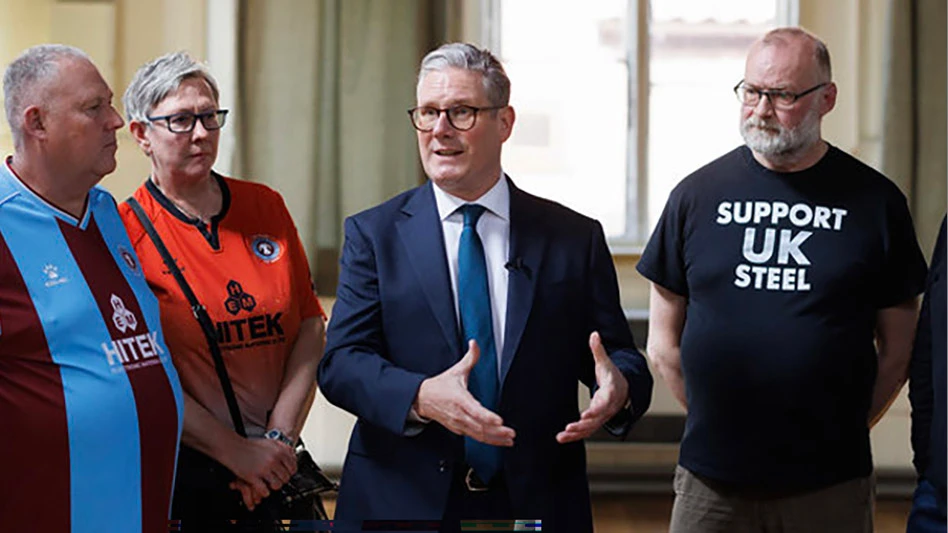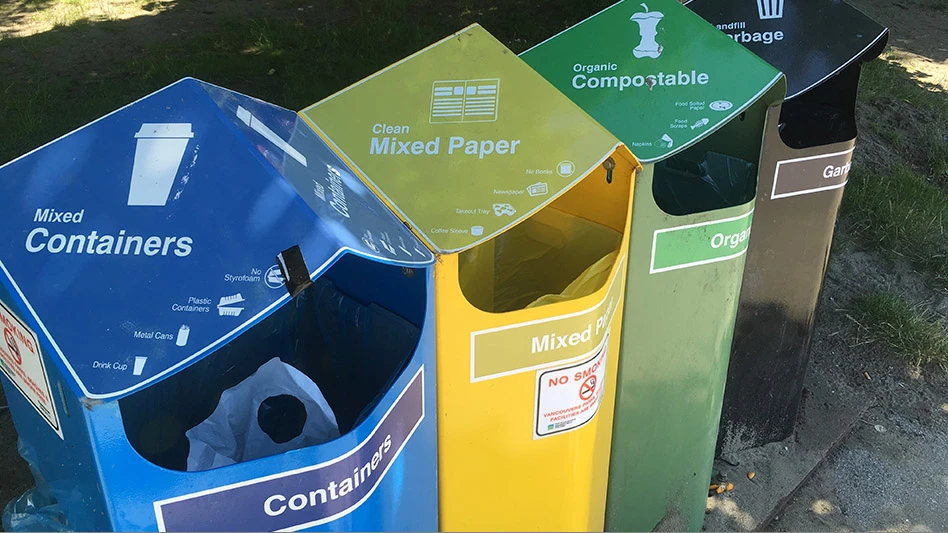 The global steel industry appears to be in correction mode, which means the same can be said for the ferrous scrap industry. Most steel and ferrous scrap industry observers say they don’t expect to see a significant turnaround until the first quarter of 2013, and many are unsure of whether prices have bottomed out yet.
The global steel industry appears to be in correction mode, which means the same can be said for the ferrous scrap industry. Most steel and ferrous scrap industry observers say they don’t expect to see a significant turnaround until the first quarter of 2013, and many are unsure of whether prices have bottomed out yet.
The second half of 2012 has proven to be challenging for the ferrous scrap industry as well as for steel producers. After enjoying modest improvements in price and demand during the first half of 2012, price and demand for ferrous scrap and finished steel have slumped significantly as the year draws to a close.
Compounding concerns for ferrous scrap recyclers is the decline in generation of new material, sources say.
Prpduction declines
Recent figures from the American Iron and Steel Institute (AISI), Washington, D.C., confirm what many scrap metal recyclers have been saying in recent weeks: Capacity utilization rates at U.S. steel mills have declined.
Nancy Gravatt, vice president of communications for the AISI, says, “Capacity utilization has improved from 2011, but it has been a slow process.” While steel mills reached an operating rate of 75 percent as of mid-2012, she says, “the most recent week (that of Oct. 1, 2012) showed steel mills with an operating rate of 72 percent.”
The biggest reason for the decline is a sluggish global economy, which is reducing demand for steel.
Looking at the past 12 months, Gravatt says the first quarter of 2012 started out strong. Capacity utilization started softening in the second quarter, she says, and the third quarter was even softer.
A recent report by the World Steel Association (WorldSteel), Brussels, forecasts a 3.6 percent increase in global steel use in 2012 compared to 5.6 percent growth in 2011. WorldSteel forecasts steel use in China to grow by 4 percent to 648.8 million metric tons in 2012 compared with 2011’s steel usage growth rate of 6.2 percent. WorldSteel notes that the Chinese economy is entering a less steel-intensive growth phase as a result of the government’s efforts to rebalance the economy and restrain the country’s real estate bubble.
John Packard, founder of Steel Market Update, Dawsonville, Ga., says a survey his firm conducted during the first week of Oct. 1 shows that demand for flat rolled steel has weakened. “Customers are radically reducing the steel that they are producing and reducing order books,” he says.
“Flat roll steel prices are going down,
and expectations are that they will continue to go down,” Packard adds.
Regarding the ferrous scrap sector, Packard says buyers know that prices are declining and are holding off on new purchases as a result.

Scrap matters
Problems with the ferrous scrap market are not isolated to one region of the world. Rather, economic challenges in North America, Western Europe and China have all played a role in the slowdown in steel production and, therefore, in demand for ferrous scrap.
Packard says he believes the scrap market may reach bottom in November, though he notes a number of caveats. “If mills adjust their capacity or get orders for the late fourth quarter or reduce capacity in late October or November, we could see some stability.”
John Harris, a steel industry consultant with Aaristic Services Inc., based in Innisfil, Ontario, Canada, says China is the biggest hurdle to a full-blown improvement in the ferrous scrap market and points to the sharp decline in China’s iron ore purchases as indicative of the country’s attempt to curb steel production, which plays into the softening of the ferrous scrap market.
Harris adds that Turkish steel mills currently are able to buy steel slabs from China at the $410 level instead of purchasing ferrous scrap from the U.S. at the $400-per-ton level. “There is no reason for Turkey to buy any scrap,” he adds.
Several scrap metal recyclers report that prices for ferrous scrap have declined from $60 to $65 per ton as of mid-October. The declines seen in September and October have erased modest gains in ferrous scrap pricing that occurred through the summer.
According to a survey by The Steel Index (TSI), with U.S. offices in Pittsburgh, the bearish sentiment seen in the steel and ferrous scrap industries may last for a while. A majority of respondents foresee declining prices for steel in all regions of the world. About 65 percent of those polled say the price of steel will decrease globally, versus 25 percent who predict no change. Also, 80 percent of those polled say the price of steel in the United States will decrease, while 10 percent predict it will remain unchanged. When it comes to the European market, 57 percent of those polled say the price of steel will decrease compared with 33 percent who say it will not change. Roughly 50 percent of those polled say the price of steel in Asia will decrease, while 37 percent say the price will increase.
Turmoil in Europe
Many European ferrous scrap recyclers say they are worried about ferrous scrap markets on that continent. During a recent meeting of the European Ferrous Recovery and Recycling Federation (EFR), Brussels, a number of attendees discussed the slumping European steel industry and the impact it was having on ferrous scrap markets.
The association’s members are national federations from EU member states representing the interests of private companies that are primarily involved in the collection, sorting, trade, processing and recycling of iron and steel scrap.
Crude steel production in Europe dropped by 4.5 percent during the first six months of the year, bringing total steel production to 89 million metric tons. During the first six months, the consumption of ferrous scrap by steel mills in the European Union dropped by 3.4 percent to reach 51.4 million metric tons. The EFR also says the ratio of steel scrap to crude steel increased to 57.8 percent.
Over the first six months of 2012, EU steel producers showed a surplus of 8.51 million metric tons because of a 12.7 percent increase of steel scrap exports to third countries to reach 10.3 million metric tons and a simultaneous 5.4 percent decline of steel scrap imports (1.8 million metric tons) from developing countries.
Turkey was the main steel scrap importer with 5.6 million metric tons, an 11.6 percent increase from the first six months of 2011. The intra-European steel scrap trade reached 15.2 million metric tons (a 9.2 percent decline compared with the first half of 2011).
Despite the decline, the intra-European steel scrap trade was clearly higher than the volume of steel scrap exports to third countries. The intra-European steel scrap trade figures confirm their active role in the raw materials supply chain of EU steel production. However, the general situation of the EU steel industry remains worrying. Steel demand is 25 percent below its 2007 level with a current 25 to 30 percent overcapacity.
“Closures of some steelworks, mergers and environmental issues represent a serious threat to the steel sector, which has to compete on a global level with respect to CO2 (carbon dioxide) emissions and energy costs,” the EFR states in a press release issued Oct. 3, 2012. As a result, the European scrap collection and processing sector reported a significant decrease in order volumes. This has led to a decline in scrap prices in Europe, ultimately discouraging scrap collection and processing because of little to no margin at all, according to the EFR. In addition, scrap operators witnessed a considerable reduction of scrap availability.
The drop in steel production also resulted in less prompt scrap being produced, creating an even smaller pool of ferrous scrap for recyclers in Europe, according to the EFR.
With all these headwinds, the EFR says the short-term market outlook is certainly not very positive for EU steel producers and recyclers.
The EFR also notes that increasing volumes of rebar are flooding the Turkish market at prices well below Turkish production cost. “As Turkey, the main scrap purchaser, is being squeezed out of its traditional market, the EU markets for steel and steel scrap will undoubtedly be affected,” EFR President Tom Bird said during the meeting.
Beyond Europe
In a report submitted to Steel Markets Update, Damon Sun with Daido International, El Segundo, Calif., says the effect of declining steel production in China is spreading further into the Far East and South East Asian local markets. “Despite publicized reports of higher local finish[ed] prices in most parts of China, the Chinese mills and traders/stockists have been aggressively making export deals,” Sun writes. “The effect is lower priced billets exported into larger reroller markets,” he adds.
Sun notes that in Thailand and in Vietnam it is cheaper to import Chinese billets for rerolling than to melt scrap and reroll it at domestic mills. “Consequently, some mills have reduced melt shifts and are contemplating import[ing] billets to compete with the local rerollers.”
Sun adds, “At this point, it is all about playing defense until the end of the year,” noting the excess capacity on the market.
“There may be a cargo here and there showing prices turning upwards,” Sun continues, “but likely it’s all games by mills to jump-start sales (showing scrap prices bottomed and coming up). I don’t expect price trends to reverse until early December. By then, scrap inventories and collections should be rather scarce, causing the Q1 2013 jump in prices.”
Longer-term, the outlook for ferrous scrap markets is more optimistic.
Cause for Optimism
Chinese steel mills are expected to consume more ferrous scrap at the expense of iron ore in the future. In a Bloomberg report, Chun Chi Wai, chairman of Hong Kong-based China Metal Recycling Holding Ltd., among the largest metals recycling companies in China, says ferrous scrap may be the raw material of choice for more than 20 percent of the steel produced in the country by 2015, compared with 14 percent at the present.
Looking into the future, Michelle Applebaum, a steel market analyst with Steel Market Intelligence, based in Chicago, says U.S. domestic steel production continues to decline on a week-by-week basis while global steel production is showing a similar downward trend on a month-to-month basis. Applebaum notes that the fall in ferrous markets has been driven by a near-two-year low in domestic steel production as well as by weakening global steel production.
“We suspect the prime to shredded ratio—which is now near parity and [at] the lowest level since November 2008—put a floor under prime grades, although we are surprised there has not been more substitution of the higher-yielding prime grades earlier,” Applebaum writes in a recent report.
“Between weaker obsolete generation and strengthening prime generation, we are seeing shredded and busheling within $1 of each other,” she says.
Applebaum continues, “We expect to see continued pressure on scrap prices as weakening global steel production, tepid iron ore prices and continued global economic jitters offset normal seasonal strength, which we do not expect to see until year-end.”
Regarding export markets for ferrous scrap, Turkey, a key buyer of material from the U.S., also has cut ferrous purchases in the face of a slackening in demand, says Applebaum, because of political instability in key export markets in the Middle East, as well as increasing power costs.
Also playing a role in the decline in shipments to Turkey has been the herd mentality, with some Turkish buyers holding off on new purchases in anticipation of U.S. scrap metal prices falling even further. However, she notes, a recent purchase may have broken the drought in buys from Turkish mills.
Despite the decline in steel production, Applebaum says her consulting firm is seeing signs of stabilization in China. “While this hasn’t begun to hit in the West, we suspect that lower exports from China, due to production cuts, will eventually translate into improved pricing in the United States, but we do not see production picking up meaningfully until the first quarter of next year,” she writes.
TSI adds that U.S. steel sheet price weakness, a factor that has been weighing on scrap prices, may be on the wane, with the auto industry seeing its best month for sales in years as of September. TSI adds that optimists are expecting sheet prices to remain at current levels, though strong auto production is unlikely to provide much support for busheling prices.
As for scrap generation, a growing concern for many scrap metal processors, Applebaum says obsolete generation continues to be challenged and shredder overcapacity is a worsening problem.
“We are bearish on iron ore, and that motivates an overall bearish view on ferrous scrap markets. There is significant [iron ore] capacity coming online in the mining side in the next few years and this should continue to pressure scrap markets,” Applebaum says.
The author is senior editor of Recycling Today and can be contacted at dsandoval@gie.net.

Explore the November 2012 Issue
Check out more from this issue and find your next story to read.
Latest from Recycling Today
- Steel Dynamics nets $217 million on record shipments
- Massive Chinese steelmaking rebound recorded in March
- LME looks into sustainable metal pricing
- OnePlanet Solar Recycling closes $7M seed financing round
- AMCS launches AMCS Platform Spring 2025 update
- Cyclic Materials to build rare earth recycling facility in Mesa, Arizona
- Ecobat’s Seculene product earns recognition for flame-retardant properties
- IWS’ newest MRF is part of its broader strategy to modernize waste management infrastructure







